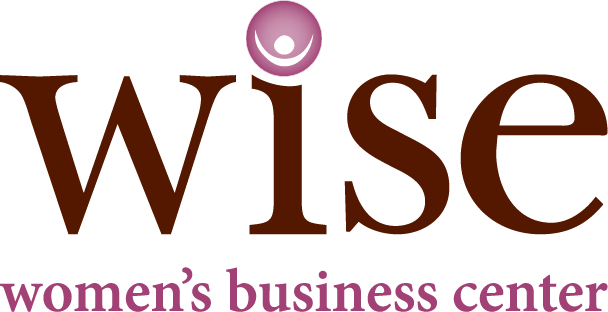
SBA's Restaurant Revitalization Fund - here's what you need to know
Summary: The Restaurant Revitalization Fund (RRF) is a program administered by the SBA to provide financial relief to restaurants, bars, and other food & drink establishments suffering economically from the pandemic.
Small businesses with majority ownership (51% or more) by women, veterans, and/or individuals from socially or economically disadvantaged groups will have priority.
The grant sizes are substantial. There are several calculations depending on when your business started, but generally the grant equals 2019 gross receipts minus 2020 gross receipts, minus any PPP funds received. However, funding is not likely to last long. Eligible entities should prepare now and apply as soon as the portal opens at noon on Monday, May 3rd. Registration for the portal starts Friday, April 30th.
UPDATE: The SBA has partnered with point-of-sale (POS) service providers to provide eligible business owners with access to the RRF application or the data needed to fill out the application. Once the application is open, qualified entities (see Who’s Eligible section below) will be able to work directly with their POS provider to apply for the RRF to accelerate the application process. Current list of supported POS providers:
- Clover ®
- NCR Corporation
- Square
- Toast
If you do not have access to a POS ecosystem, you can still apply.
Important links:
Getting more help
If, after reading this post and reviewing the SBA's guidelines, you still have questions about the RRF or how it applies to your situation, we're here to help. You can send us an email or sign up for a no-cost pandemic relief business advising call.
The basics
Program details from the SBA's website: The American Rescue Plan Act established the Restaurant Revitalization Fund (RRF) to provide funding to help restaurants and other eligible businesses keep their doors open. This program will provide restaurants with funding equal to their pandemic-related revenue loss up to $10 million per business and no more than $5 million per physical location. Recipients are not required to repay the funding as long as funds are used for eligible uses no later than March 11, 2023.
Who's eligible:
Establishments whose primary purpose is to serve food and drink to the public are eligible. This includes:
- Restaurants
- Food stands, food trucks, food carts
- Caterers
- Bars, saloons, lounges, taverns
- Snack and nonalcoholic beverage bars
- Bakeries*
- Brewpubs, tasting rooms, taprooms*
- Breweries and/or microbreweries*
- Wineries and distilleries*
- Inns*
A * indicates an establishment that must demonstrate that onsite sales to the public comprise at least 33% of gross receipts to be eligible.
Use of funds
- Business payroll costs (including sick leave)
- Payments on any business mortgage obligation
- Business rent payments (note: this does not include prepayment of rent)
- Business debt service (both principal and interest; note: this does not include any prepayment of principal or interest)
- Business utility payments
- Business maintenance expenses
- Construction of outdoor seating
- Business supplies (including protective equipment and cleaning materials)
- Business food and beverage expenses (including raw materials)
- Covered supplier costs
- Business operating expenses
How to prepare
Start by reading through all the documentation from the SBA. This is the main website for the RRF. If you determine you are eligible, start preparing by:
- Understand which calculation you'll do, and calculate your funding amount. This depends on when your business became operational. See page 6 of the program guide.
- Know how you'll apply. You can go through one of the SBA's Point of Sale partners (Clover, NCR Corporation, Square, Toast), through the SBA's online portal, or via telephone with the SBA.
- Collect your documentation. You'll need proof of gross receipts, and will need to complete IRS form 4506-T (via the SBA portal will suffice). Certain other establishments, like breweries, wineries, etc., will need to provide additional documentation. See page 15-16 of the program guide for more detail.
- Review and practice filling out the sample application
Note that practicing with the sample application is important as there will be no way for you to amend the application once it's submitted and any missing documentation will delay review.
Timeline
Registrations for the portal will open on April 30th at 9am. Applications will be open starting at noon on Monday, May 3rd. Visit sba.gov/restaurants to get started.
Small businesses with majority ownership by women, veterans, and/or individuals from socially or economically disadvantaged groups will have priority for the first 21 days. That means while all eligible businesses are able to apply as soon as the portal opens, only applications from these priority groups will be processed and funded during that timeframe. See page 14 of the program guide for more info about how priority funding works.
Here's how the socially and economically disadvantaged groups are defined (see page 20 of the program guide):
Socially disadvantaged individuals (13 CFR § 124.103) are those who have been subjected to racial or ethnic prejudice or cultural bias because of their identity as a member of a group
without regard to their individual qualities. Individuals who are members of the following groups are presumed to be socially disadvantaged: Black Americans; Hispanic Americans; Native
Americans (including Alaska Natives and Native Hawaiians); Asian Pacific Americans; or Subcontinent Asian Americans.
Economically disadvantaged individuals (13 CFR § 124.104) are those socially disadvantaged individuals whose ability to compete in the free enterprise system has been impaired due to diminished capital and credit opportunities as compared to others in the same business area who are not socially disadvantaged.
